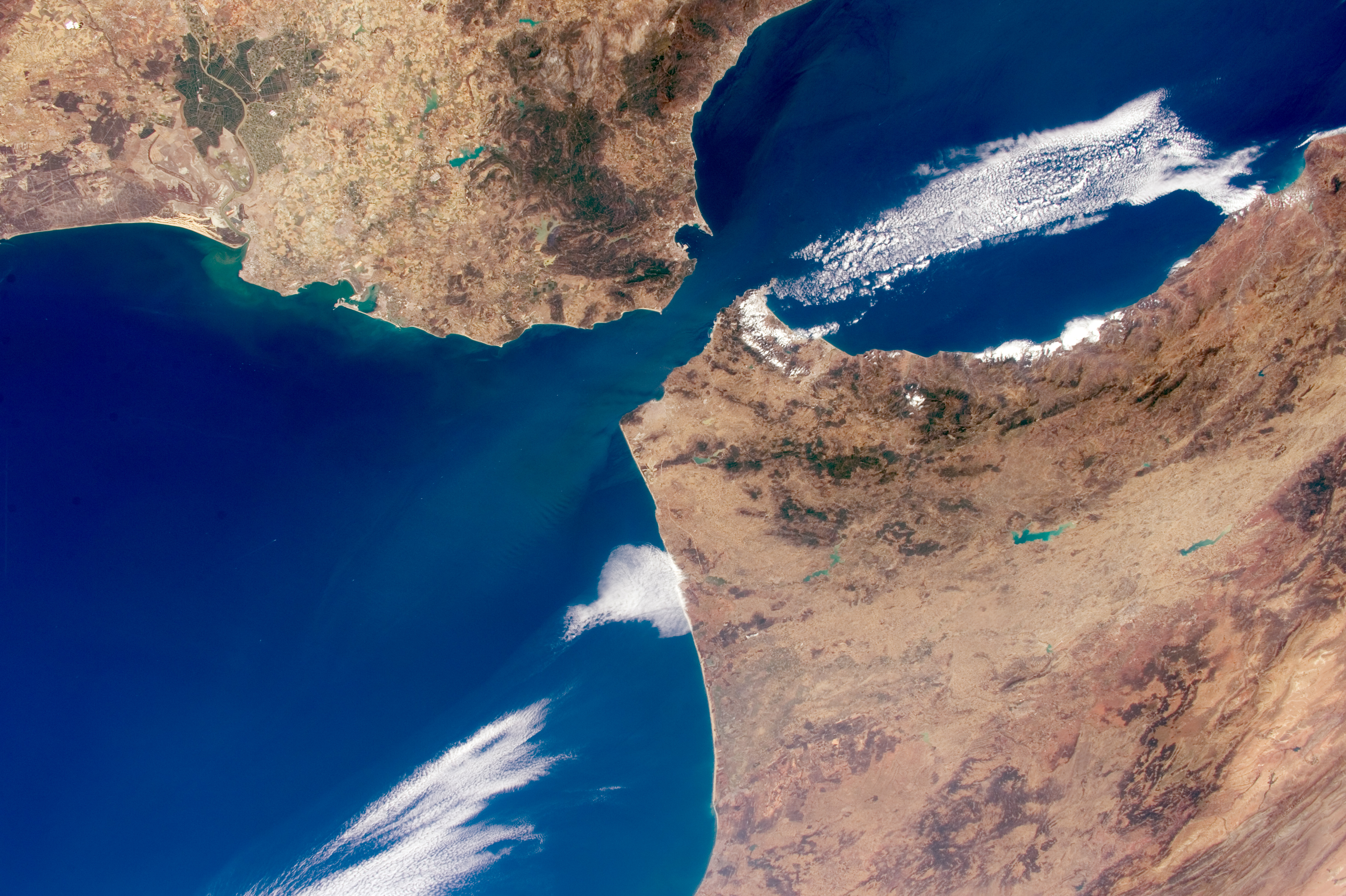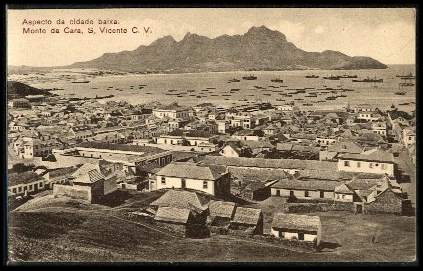|
Canal De São Vicente
The Canal de São Vicente is a strait of the Atlantic Ocean separating the islands of Santo Antão, Cape Verde, Santo Antão and São Vicente, Cape Verde, São Vicente, Cape Verde. At its narrowest point, it is wide. The ferry route between the ports of Porto Novo, Cape Verde, Porto Novo on Santo Antão and Mindelo on São Vicente crosses the canal. The channel begins in São Vicente's northwesternmost cape near Monte Cara, Cape Verde, Monte Cara up to the headland Ponta de João d'Évora in the northeast. The Canal de São Vicente is the habitat of some endemic species, including the demosponge ''Amphilectus strepsichelifer'' and the cone snail ''Conus fernandesi''. References {{DEFAULTSORT:Sao Vicente Bodies of water of Cape Verde Geography of Santo Antão, Cape Verde Geography of São Vicente, Cape Verde Straits of the Atlantic Ocean ... [...More Info...] [...Related Items...] OR: [Wikipedia] [Google] [Baidu] |
Atlantic Ocean
The Atlantic Ocean is the second largest of the world's five borders of the oceans, oceanic divisions, with an area of about . It covers approximately 17% of Earth#Surface, Earth's surface and about 24% of its water surface area. During the Age of Discovery, it was known for separating the New World of the Americas (North America and South America) from the Old World of Afro-Eurasia (Africa, Asia, and Europe). Through its separation of Afro-Eurasia from the Americas, the Atlantic Ocean has played a central role in the development of human society, globalization, and the histories of many nations. While the Norse colonization of North America, Norse were the first known humans to cross the Atlantic, it was the expedition of Christopher Columbus in 1492 that proved to be the most consequential. Columbus's expedition ushered in an Age of Discovery, age of exploration and colonization of the Americas by European powers, most notably Portuguese Empire, Portugal, Spanish Empire, Sp ... [...More Info...] [...Related Items...] OR: [Wikipedia] [Google] [Baidu] |
Cape Verde
Cape Verde or Cabo Verde, officially the Republic of Cabo Verde, is an island country and archipelagic state of West Africa in the central Atlantic Ocean, consisting of ten volcanic islands with a combined land area of about . These islands lie between west of Cap-Vert, the westernmost point of continental Africa. The List of islands of Cape Verde, Cape Verde islands form part of the Macaronesia ecoregion, along with the Azores, the Canary Islands, Madeira and the Savage Isles. The Cape Verde archipelago was uninhabited until the 15th century, when Portuguese Empire, Portuguese explorers colonized the islands, establishing one of the first Age of Discovery, European settlements in the tropics. Due to its strategic position, Cape Verde became a significant location in the Atlantic slave trade, transatlantic slave trade during the 16th and 17th centuries. The islands experienced economic growth during this period, driven by their role by the rapid emergence of merchants, priva ... [...More Info...] [...Related Items...] OR: [Wikipedia] [Google] [Baidu] |
Ilhéu Dos Pássaros
Ilhéu dos Pássaros is an uninhabited rocky islet in the bay of Mindelo, São Vicente Island, Cape Verde. It lies about west of the headland Ponta João Ribeiro, and northwest of Mindelo city centre. It lies between the Porto Grande Bay and the Canal de São Vicente, the channel of the Atlantic Ocean that separates the islands of São Vicente and Santo Antão. There is a lighthouse on the islet. Ilhéu dos Pássaros was depicted on a Cape Verdean $500 escudo bill issued between 1992 and 2000. The Cape Verdean author Orlanda Amarílis Orlanda Amarílis Lopes Rodrigues Fernandes Ferreira, known as Orlanda Amarílis (8 October 1924 – 1 February 2014) was a Cape Verdean writer. She is considered to be a noteworthy writer of fiction whose main literary themes include perspective ... published ''Ilhéu dos Pássaros'', a collection of short stories, in 1983. References {{DEFAULTSORT:Ilheu dos Passaros Uninhabited islands of Cape Verde ... [...More Info...] [...Related Items...] OR: [Wikipedia] [Google] [Baidu] |
Porto Novo, Cape Verde
Porto Novo is a cityCabo Verde, Statistical Yearbook 2015 Instituto Nacional de Estatística, p. 32-33 in the island of Santo Antão, in . It is the seat of the Porto Novo municipality. At the 2010 census, the town had 9,310 inhabitants, which makes ... [...More Info...] [...Related Items...] OR: [Wikipedia] [Google] [Baidu] |
Strait
A strait is a water body connecting two seas or water basins. The surface water is, for the most part, at the same elevation on both sides and flows through the strait in both directions, even though the topography generally constricts the flow somewhat. In some straits there is a dominant directional current. Most commonly, the strait is a narrowing channel that lies between two land masses. Straits are loci for sediment accumulation, with sand-size deposits usually occurring on the two strait exits, forming subaqueous fans or deltas. Some straits are not navigable because, for example, they are too narrow or too shallow, or because of an unnavigable reef or archipelago. Terminology The terms '' channel'', ''pass'', or ''passage'' can be synonymous and used interchangeably with ''strait'', although each is sometimes differentiated with varying senses. In Scotland, '' firth'' or ''Kyle'' are also sometimes used as synonyms for strait. Many straits are economically impor ... [...More Info...] [...Related Items...] OR: [Wikipedia] [Google] [Baidu] |
Santo Antão, Cape Verde
Santo Antão (Portuguese language, Portuguese for "Anthony the Great, Saint Anthony") is the northwesternmost island of Cape Verde. At , it is the largest of the Barlavento Islands group, and the second largest island of Cape Verde.Cabo Verde, Statistical Yearbook 2015 Instituto Nacional de Estatística (Cape Verde), Instituto Nacional de Estatística The nearest island is São Vicente, Cape Verde, São Vicente to the southeast, separated by the sea channel Canal de São Vicente. Its population was 38,200 in mid 2019,Instituto Nacional de Estatística, Cabo Verde (web). making it the fourth most populous island of Cape Verde after Santiago, Cape Verde, Santiago, São Vicente and Sal. Its largest city is Porto Novo, Cape Verde, Porto Novo located on the ... [...More Info...] [...Related Items...] OR: [Wikipedia] [Google] [Baidu] |
São Vicente, Cape Verde
São Vicente (Portuguese language, Portuguese for "Vincent of Saragossa, Saint Vincent") is one of the Barlavento Islands, the northern group within the Cape Verde archipelago in the Atlantic Ocean, off the West Africa, West African coast. It is located between the islands of Santo Antão, Cape Verde, Santo Antão and Santa Luzia, Cape Verde, Santa Luzia, with the Canal de São Vicente separating it from Santo Antão. Geography The island is roughly rectangle, rectangular in shape with an area of . From east to west it measures and from north to south .Cabo Verde, Statistical Yearbook 2015 Instituto Nacional de Estatística (Cape Verde), Instituto Nacional de Estatística The island, of volcano, volcanic origin, is fairly flat. The last volcanic activity is considered to have t ... [...More Info...] [...Related Items...] OR: [Wikipedia] [Google] [Baidu] |
Mindelo
Mindelo is a port cityCabo Verde, Statistical Yearbook 2015 Instituto Nacional de Estatística (Cape Verde), Instituto Nacional de Estatística, p. 32-33 in the northern part of the island of São Vicente, Cape Verde, São Vicente in Cape Verde. Mindelo is also the seat of the parish of Nossa Senhora da Luz, and the municipality of São Vicente, Cape Verde, São Vicente. The city is home to 93% of the entire island's population and is Cape Verde's second most populous city and largest city in Barlavento Islands. Mindelo is also considered the cultural capital of Cape Verde, known for its colourful and animated carnival celebrations, with roots in Culture of Portugal, Portuguese traditions later influenced by the Brazilian culture. History [...More Info...] [...Related Items...] OR: [Wikipedia] [Google] [Baidu] |
Monte Cara, Cape Verde
Monte Cara is a mountain in western part of the island of São Vicente, Cape Verde. Its elevation is 490 m.Inventário dos recursos turísticos do município de S. Vicente Direcção Geral do Turismo, p. 30 It resembles a human face looking at the sky, hence its name, which means "face mountain" in Portuguese. It is a landmark of the city of , from which it can be seen across . The album '' Voz ... [...More Info...] [...Related Items...] OR: [Wikipedia] [Google] [Baidu] |
Ponta De João D'Évora
Ponta may refer to: Ponta, Portuguese for "point" or promontory, is a part of many Portuguese and Brazilian toponyms: * Ponta, Texas * Ponta Grossa, a city in Brazil * Ponta Pelada Airport, an airport in Brazil * Ponta Porã International Airport, the airport serving Ponta Porã, Brazil * Ponta Porã, a municipality in Brazil * Victor Ponta (born 1972), Romanian politician See also * Ponta Cabinet (other) * Ponta Delgada (other) Ponta Delgada is the largest city and administrative capital of the Autonomous Region of the Azores in Portugal. Ponta Delgada may also refer to: * Ponta Delgada (district) The District of Ponta Delgada was a district of the ''Ilhas Adjacentes' ... * Punta (other) * - includes many geographical locations {{Disambiguation ... [...More Info...] [...Related Items...] OR: [Wikipedia] [Google] [Baidu] |
Demosponge
Demosponges or common sponges are sponges of the class Demospongiae (from + ), the most diverse group in the phylum Porifera which include greater than 90% of all extant sponges with nearly 8,800 species A species () is often defined as the largest group of organisms in which any two individuals of the appropriate sexes or mating types can produce fertile offspring, typically by sexual reproduction. It is the basic unit of Taxonomy (biology), ... worldwide (according to the World Porifera Database). Being siliceous sponges, they are predominantly sponge#leuconoid, leuconoid in structure with an endoskeleton made of a meshwork of sponge spicule, spicules consisting of fibers of the protein spongin, the mineral silica, or both. Where spicules of silica are present, they have a different shape from those in the otherwise similar glass sponges. Some species, in particular from the Antarctic, obtain the silica for spicule-building from the ingestion of diatoms. The m ... [...More Info...] [...Related Items...] OR: [Wikipedia] [Google] [Baidu] |
Amphilectus Strepsichelifer
''Amphilectus strepsichelifer'' is a species of demosponges found in the Atlantic waters around Cape Verde, western Africa. The species name is a combination of the Latin ''strepsis'' = twisted, and ''chelifer'' = bearing chelae, reflecting the twisted condition of the chelae. The species was discovered in 1986 in the waters of Canal de São Vicente The Canal de São Vicente is a strait of the Atlantic Ocean separating the islands of Santo Antão, Cape Verde, Santo Antão and São Vicente, Cape Verde, São Vicente, Cape Verde. At its narrowest point, it is wide. The ferry route between the p ..., west of São Vicente, at about 350 m depth, on hard bottom. This is the only place where it has been observed. References Poecilosclerida Fauna of Cape Verde Animals described in 2012 {{Demosponge-stub ... [...More Info...] [...Related Items...] OR: [Wikipedia] [Google] [Baidu] |





